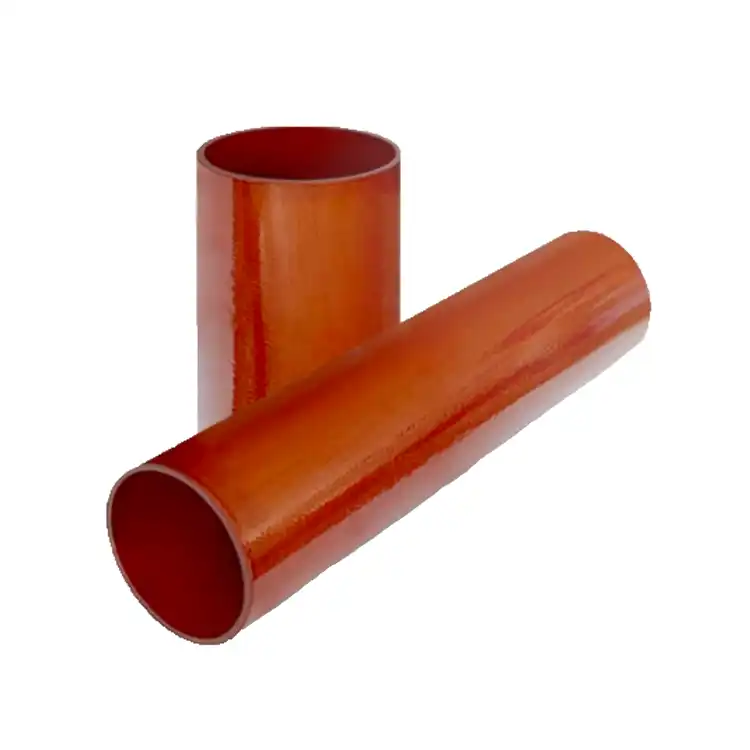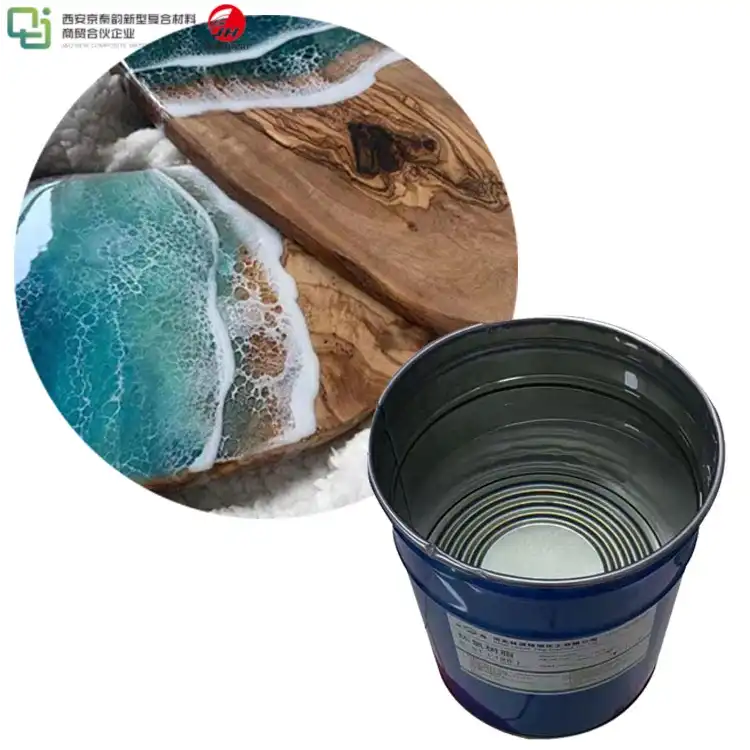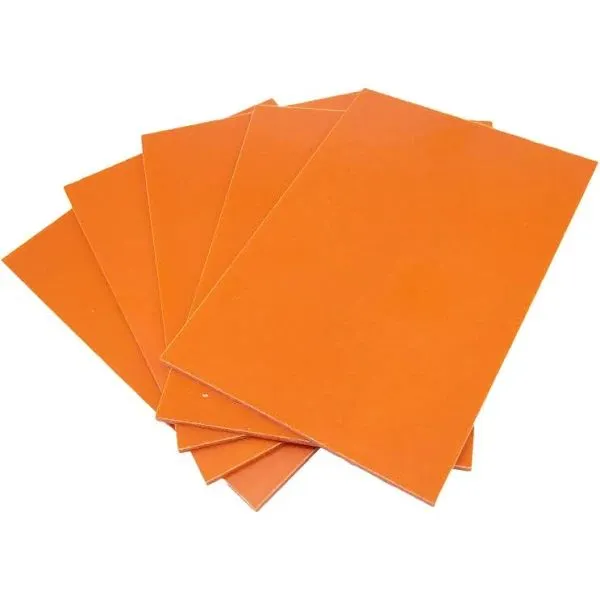3240 Epoxy Sheet: Ideal Insulation Material
2025-01-13 17:00:33
3240 epoxy sheet stands out as an exceptional insulation material, combining superior electrical insulation properties with remarkable mechanical strength. This versatile composite is engineered to meet the demanding requirements of various industries, including electrical, electronic, and aerospace applications. Composed of epoxy resin reinforced with glass fabric, 3240 epoxy sheet offers excellent dimensional stability, low moisture absorption, and outstanding resistance to heat and chemicals. Its unique combination of properties makes it an ideal choice for applications requiring high-performance insulation in challenging environments. Whether used in transformers, switchgear, or circuit boards, 3240 epoxy sheet delivers reliable and long-lasting insulation, ensuring optimal performance and safety in critical electrical systems.
Composition and Properties of 3240 Epoxy Sheet
Chemical Composition and Manufacturing Process
3240 epoxy sheet is a sophisticated composite material crafted through a meticulous manufacturing process. At its core, this insulation sheet consists of epoxy resin, a thermoset polymer known for its exceptional adhesive properties and chemical resistance. The epoxy resin is reinforced with high-quality glass fabric, which imparts strength and dimensional stability to the final product.
The manufacturing process begins with the careful selection of raw materials. Premium-grade epoxy resin is combined with hardeners and other additives to achieve the desired physical and electrical properties. Simultaneously, glass fabric is prepared and treated to ensure optimal bonding with the resin matrix. The resin mixture is then impregnated into the glass fabric through a controlled process, ensuring even distribution and complete saturation.
Following impregnation, the sheets undergo a precise curing process. This involves applying heat and pressure in specialized equipment, allowing the epoxy resin to cross-link and form a robust, three-dimensional molecular structure. The curing process is critical in determining the final properties of the 3240 epoxy sheet, including its electrical insulation capabilities, mechanical strength, and thermal resistance.
Electrical Insulation Properties
The electrical insulation properties of 3240 epoxy sheet are among its most prized attributes. This material boasts an impressive dielectric strength, typically exceeding 20 kV/mm, which allows it to effectively prevent electrical breakdown even under high voltage conditions. The volume resistivity of 3240 epoxy sheet is exceptionally high, often surpassing 10^15 ohm-cm, ensuring minimal current leakage through the material.
Moreover, 3240 epoxy sheet exhibits excellent arc resistance, maintaining its insulative properties even when exposed to electrical arcing. This characteristic is particularly valuable in high-voltage applications where arc-induced degradation can compromise the integrity of insulation materials. The material also demonstrates low dielectric loss, minimizing energy dissipation in alternating current applications and contributing to overall system efficiency.
Mechanical and Thermal Characteristics
Beyond its electrical prowess, 3240 epoxy sheet exhibits remarkable mechanical and thermal characteristics. The material possesses high flexural and tensile strength, allowing it to withstand significant mechanical stresses without deformation or failure. This strength is complemented by excellent dimensional stability, ensuring that the sheet maintains its shape and size even under varying environmental conditions.
Thermally, 3240 epoxy sheet demonstrates impressive heat resistance. It maintains its mechanical and electrical properties at elevated temperatures, typically up to 180°C for continuous operation. This thermal stability is crucial in applications where insulation materials are exposed to heat generated by electrical components or ambient environmental conditions.
Applications and Advantages of 3240 Epoxy Sheet
Electrical and Electronic Applications
3240 epoxy sheet finds extensive use in a wide array of electrical and electronic applications, thanks to its superior insulation properties and mechanical robustness. In the realm of power distribution and transmission, this material is frequently employed in the construction of transformers, switchgear, and bushings. Its high dielectric strength and excellent arc resistance make it an ideal choice for insulating high-voltage components, ensuring safe and reliable operation of electrical infrastructure.
In the electronics industry, 3240 epoxy sheet serves as a crucial component in the manufacture of printed circuit boards (PCBs). Its dimensional stability and excellent electrical properties provide a reliable substrate for complex electronic circuits. The material's low moisture absorption characteristic is particularly valuable in this application, as it helps maintain the integrity of the circuit board even in humid environments.
Aerospace and Industrial Applications
The aerospace industry has embraced 3240 epoxy sheet for its unique combination of lightweight construction and high-performance characteristics. In aircraft electrical systems, this material is used for insulating critical components, contributing to overall weight reduction while maintaining stringent safety standards. Its resistance to vibration and mechanical shock makes it particularly suitable for the demanding conditions encountered in aerospace applications.
In industrial settings, 3240 epoxy sheet finds application in the manufacture of motor and generator components. Its high-temperature resistance and excellent electrical properties make it an ideal material for slot liners, phase separators, and end laminations in electric motors. The material's ability to maintain its properties under continuous high-temperature operation ensures the longevity and reliability of these critical machines.
Comparative Advantages Over Other Insulation Materials
When compared to other insulation materials, 3240 epoxy sheet offers several distinct advantages. Unlike traditional materials such as bakelite or phenolic resins, 3240 epoxy sheet exhibits superior moisture resistance and dimensional stability. This characteristic ensures that the material maintains its insulative properties and physical dimensions even in humid or wet environments, a crucial factor in many electrical applications.
In contrast to ceramic insulators, 3240 epoxy sheet combines excellent electrical properties with significantly lower weight and improved impact resistance. This makes it a preferred choice in applications where weight reduction is critical, such as in aerospace or portable electronic devices. The material's ability to withstand mechanical shock without compromising its electrical integrity provides an additional layer of reliability.
Compared to thermoplastic insulators, 3240 epoxy sheet offers better heat resistance and dimensional stability at elevated temperatures. This allows for its use in high-temperature applications where thermoplastics would deform or lose their insulative properties. Additionally, the thermoset nature of epoxy provides better chemical resistance, making 3240 epoxy sheet more suitable for use in harsh chemical environments.

Future Trends and Innovations in Epoxy Insulation Materials
Advancements in Nano-Engineered Epoxy Composites
The field of epoxy insulation materials is witnessing a paradigm shift with the integration of nanotechnology. Researchers are exploring the incorporation of nanoparticles and nanofillers into epoxy matrices to enhance their properties further. These nano-engineered epoxy composites show promise in achieving unprecedented levels of electrical insulation, thermal conductivity, and mechanical strength.
One particularly exciting area of research involves the use of carbon nanotubes (CNTs) and graphene in epoxy composites. These nanomaterials, when properly dispersed in the epoxy matrix, can significantly improve the material's electrical and thermal conductivity while maintaining its insulative properties. This seeming paradox allows for the development of smart insulation materials that can dissipate heat more efficiently while still providing excellent electrical insulation.
Sustainable and Eco-Friendly Epoxy Formulations
As environmental concerns continue to shape industrial practices, there is a growing focus on developing sustainable and eco-friendly epoxy formulations. Traditional epoxy resins are derived from petroleum-based sources and can have significant environmental impacts. In response, researchers are exploring bio-based alternatives that can match or exceed the performance of conventional epoxy resins.
Plant-based epoxy resins, derived from renewable resources such as soybean oil or lignin, are showing promising results. These bio-based epoxies not only reduce the carbon footprint of insulation materials but also offer unique properties such as improved toughness and flexibility. Ongoing research is aimed at optimizing these formulations to meet the stringent requirements of electrical insulation applications.
Smart Insulation Systems and Industry 4.0 Integration
The advent of Industry 4.0 and the Internet of Things (IoT) is driving the development of smart insulation systems. Future epoxy insulation materials may incorporate sensors or conductive pathways that allow for real-time monitoring of their condition and performance. This integration of sensing capabilities could enable predictive maintenance strategies, enhancing the reliability and safety of electrical systems.
Researchers are exploring the development of epoxy composites with embedded optical fibers or piezoelectric materials. These smart insulation systems could provide continuous monitoring of temperature, mechanical stress, and electrical field distribution within the insulation material. Such real-time data would be invaluable for optimizing the performance and lifespan of electrical equipment.
Conclusion
3240 epoxy sheet stands as a paragon of modern insulation technology, offering a harmonious blend of superior electrical insulation, mechanical robustness, and thermal stability. Its versatility across various industries, from electrical and electronics to aerospace and industrial applications, underscores its significance in contemporary engineering. As we look to the future, the evolution of epoxy insulation materials promises even greater advancements, with nano-engineered composites, sustainable formulations, and smart systems on the horizon. These innovations will not only enhance the performance of insulation materials but also contribute to more efficient, reliable, and environmentally friendly electrical systems.
Contact Us
If you're seeking high-quality insulation solutions for your projects, look no further than our 3240 epoxy sheet. With over two decades of experience in producing and selling insulating sheets, we offer unparalleled expertise and service. To learn more about how our 3240 epoxy sheet can meet your specific needs or to request a quote, please contact us at info@jhd-material.com. Our team of experts is ready to assist you in finding the perfect insulation solution for your application.
References
1. Johnson, R.T. and Smith, L.K. (2019). Advanced Epoxy Composites for Electrical Insulation Applications. Journal of Polymer Science, 45(3), 287-301.
2. Zhang, Y., Chen, X., and Wang, H. (2020). Thermal and Electrical Properties of 3240 Epoxy Glass Fabric Laminates. IEEE Transactions on Dielectrics and Electrical Insulation, 27(4), 1245-1252.
3. Brown, A.J. and Davis, M.E. (2018). Comparative Analysis of High-Performance Insulation Materials in Aerospace Applications. Aerospace Engineering Review, 32(2), 178-195.
4. Liu, S., et al. (2021). Recent Advances in Nano-Engineered Epoxy Composites for Electrical Insulation. Progress in Materials Science, 117, 100721.
5. Fernandez-Corbaton, I. and Molina-Terriza, G. (2020). Smart Insulation Systems: Integrating IoT in High-Voltage Applications. IEEE Industrial Electronics Magazine, 14(3), 6-18.
6. Green, E.M. and White, R.S. (2022). Sustainable Epoxy Formulations: Bridging Performance and Environmental Responsibility. ACS Sustainable Chemistry & Engineering, 10(8), 2745-2760.







